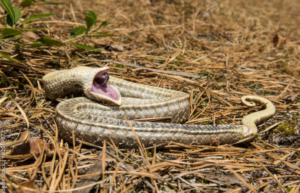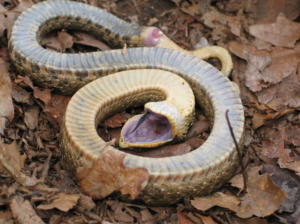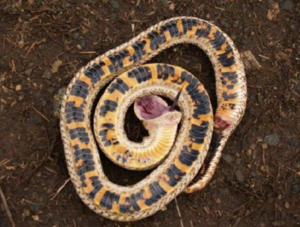Hognose snakes (genus Heterodon) are non-venomous serpents native to North America, renowned for their unique defensive behavior of feigning death. This dramatic act serves as a survival strategy to deter predators.
Physical Characteristics
Hognose snakes are easily identifiable by their upturned snouts, which they use for burrowing in sandy soils. They are relatively small, with adults typically measuring between 14 to 46 inches in length, depending on the species. Their stout bodies and keeled scales give them a distinctive appearance
Defensive Behaviors
When threatened, hognose snakes exhibit a series of defensive behaviors. Initially, they may flatten their necks, hiss loudly, and perform mock strikes with closed mouths. If these tactics fail to deter the threat, they resort to playing dead. This involves rolling onto their backs, opening their mouths, letting their tongues hang out, and sometimes releasing foul-smelling musk or even defecating to enhance the illusion
Effectiveness of Death-Feigning
The death-feigning behavior is an innate response observed even in hatchlings. While the exact effectiveness varies, it’s believed that many predators avoid carrion to reduce the risk of disease, making this strategy beneficial for the snake’s survival.
Habitat and Diet
Hognose snakes inhabit a range of environments, including grasslands, forests, and deserts. They primarily feed on amphibians like toads and frogs but will also consume small rodents and reptiles. Their upturned snouts aid in digging for prey and creating burrows.
In summary, hognose snakes are fascinating reptiles whose dramatic defensive behaviors have captivated both scientists and enthusiasts. Their ability to convincingly play dead showcases the diverse strategies animals employ for survival. 
